#TULSI DEVI
Photo
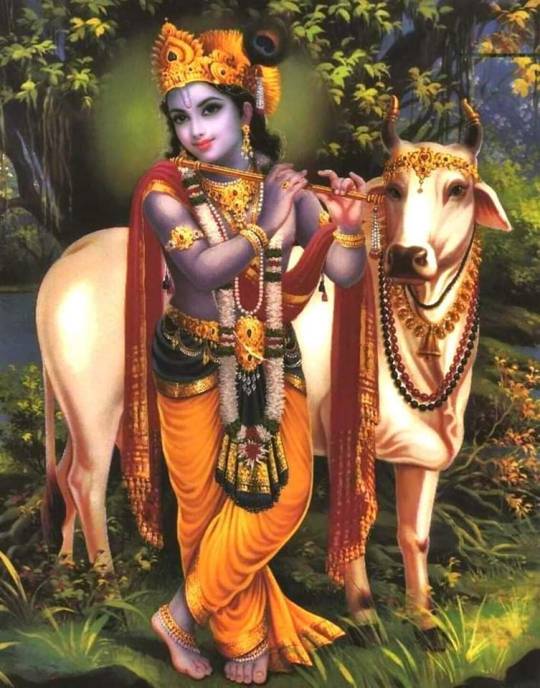
Karma is a product of the mind. Our mind has myriads of impressions from this life and our previous lives. That's why we have to engage our minds as much as possible in the purifying vibrations of Krishna.

Queen Samya ✨✨✨
Anoushka Shankar•Monsoon
https://www.instagram.com/p/CsD-QY-LRzs/
#ISKCON#HARE KRISHNA#KRISHNA#BHAKTI#VEDIC#VAISHNAVA#GOPI#VRINDAVAN#SRIMATI RADHARANI#TULSI DEVI#SKA PASTORA#SALVIA DIVINORUM#THE EYES OF THE SHEPHERDESS
18 notes
·
View notes
Text
The Path of the Masters is Within: "To attain liberation/salvation, Sant Mat does not follow numerous complicated practices, but two essential methods:
1) Drishti Marg (i.e. the Path of inner Light/Vision) and,
2) Shabd Marg (i.e. the Way of inner Sound/Transcendental Hearing).
“Unlike other worship methods popular in religions and sects with different names, these two methods are not man-made. God himself is the founder and operator of these methods. Since the beginning God has kept these two methods inside human beings with full qualifications. The way of redemption of jivas (i.e. bounded souls) is available within all human beings." (Baba Devi Sahab)

#meditation#sant mat#baba devi sahab#tulsi sahib#rai saligram#spirituality#inner light and sound#surat shabd yoga#path of the masters
6 notes
·
View notes
Text
Hindu goddess as students in school ; another modern(ish) au
disclaimer: there are as many as thousand avataras of lakshmi devi and I can definitely not add all of them <\3
✿ Lakshmi
• rich girl™
• she loves to take care of her friends
• "wanna go out girls? My treat!"
• her love language is obv giving gifts to her girls
• she and vishnu are the IT couple of the school.
✿ Parvati
• Feminist™
• a girl's girl
• a great dancer
• really kind and nice but everyone is scared to talk to her because that shiva dude is always following her 🙄
• power couple tbh.
✿ Saraswati
• epitome of studious™
• always shares her notes and explains topics if someone needs help (our savior fr)
• she plays veena. beautifully.
• she and brahma are the parent friends.
• every one calls for her one day before the exam 😃
✿ Sita
• Girl boss™
• done with everyone. she is just wants to go home 😭
• she reminds everyone to stay hydrated and eat properly everyday, she even shares her lunch with everyone
• she somehow became the class representative btw.
• so she hangs out with Rama a lot because of their work.
✿ Padmavati
• cottage core girly™
• really really shy
• spends most of the time in the school garden taking care of the plants and trees.
• likes to wear flowers (mostly lotus) and tulsi on her braid
• venkat once accidentally confessed to her and then ran away.
✿ Durga
• fierce™
• "is someone bothering you Padma? 🤨"
• she loves the color red
• cat person (she wanted a lion/tiger but due to legal reasons, she got a cat)
• please don't piss her off
#desiblr#incorrect hindu mythology#hindu mythology memes#hindu mythology#desi girlies#hindu gods#hindublr
219 notes
·
View notes
Text
The Evolution of Madhubani Art Over Time

Madhubani art (also Mithila art) is a style of painting practiced in the Mithila region of India and Nepal. It is named after the Madhubani district of Bihar, India, which is where it originated. Artists create these paintings using a variety of mediums, including their own fingers, or twigs, brushes, nib-pens, and matchstick. The paint is created using natural dyes and pigments. The paintings are characterized by their eye-catching geometrical patterns. There is ritual content for particular occasions, such as birth or marriage, and festivals, such as Holi, Surya Shasti, Kali Puja, Upanayana, and Durga Puja.
Madhubani painting (or Mithila painting) was traditionally created by the women of various communities in the Mithila region of the Indian subcontinent. It originated from Madhubani district of the Mithila region of Bihar. Madhubani is also a major export center of these paintings.
This painting as a form of wall art was practiced widely throughout the region; the more recent development of painting on paper and canvas mainly originated among the villages around Madhubani, and it is these latter developments that led to the term “Madhubani art” being used alongside “Mithila Painting.”
Mithila paintings mostly depict people and their association with nature and scenes and deities from the ancient epics. Natural objects like the sun, the moon, and religious plants like tulsi are also widely painted, along with scenes from the royal court and social events like weddings. In this paintings generally, no space is left empty; the gaps are filled by paintings of flowers, animals, birds, and even geometric designs.[citation needed] Traditionally, painting was one of the skills that was passed down from generation to generation in the families of the Mithila Region, mainly by women .
It is still practiced and kept alive in institutions spread across the Mithila region. Asha Jha of Madhubanipaints in Darbhanga,
Vaidehi in Madhubani, Benipatti in Madhubani district and Gram Vikas Parishad in Ranti are some of the major centres of Madhubani painting which have kept this ancient art form alive.
Contributions:
The Madhubani painting tradition played a key role in the conservation efforts in India in 2012, where there was frequent deforestation in the state of Bihar. Shashthi Nath Jha, who runs the Gram Vikas Parishad, an NGO, started the initiative as an attempt to protect local trees that were being cut down in the name of expanding roads and development. The main reason behind this was that the trees were traditionally adorned with forms of gods and other religious and spiritual images such as those of Radha-Krishna, Rama-Sita, scenes from Ramayana and Mahabharata and other mythologies.
Darbhanga MP Gopal Jee Thakur started the tradition of honouring people with Mithila Painting in Indian Politics.
Awards:
Madhubani painting received official recognition in 1969 when Sita Devi received the State award by Government of Bihar. Mamta Devi from the village Jitwarpur has also got National Award. Jagdamba Devi from Bhajparaul, Madhubani was given Padma Shri in 1975 and the National Award to Sita Devi of Jitwarpur village near Madhubani.
Jagdamba Devi’s foster son Satya Narayan Lal Karn and his wife Moti Karn are also well-regarded Mithila artists, and they won the National Award jointly in 2003. Sita Devi received the Padma Shri in 1981. Sita Devi was also awarded by Bihar Ratna in 1984 and Shilp Guru in 2006.
In 1984 Ganga Devi was awarded by Padma Shri. Mahasundari Devi received the Padma Shri in 2011. Baua Devi, Yamuna Devi, Shanti Devi, Chano Devi, Bindeshwari Devi, Chandrakala Devi, Shashi kala Devi, Leela Devi, Godavari Dutta, Asha Jha and Bharti Dayal were also given the National award.
Chandrabhushan (Rasidpur), Ambika Devi (Rasidpur), Manisha Jha were also given the National award.[citation needed] In 2020, Madhubani artist Dulari Devi won the Padma Shri for contributions to art.
Styles:
Mithila art has five distinctive styles:
Bharni
Katchni
Tantrik
Godna
Kohbar
In the 1960s Bharni, and Tantrik styles were mainly done by Brahman women in India and Nepal. Their themes were mainly religious and they depicted Gods and Goddesses paintings. People of other castes included aspects of their daily life and symbols, the story of Raja Shailesh (guard of the village) and much more, in their paintings. Nowadays Madhubani art has become a globalised art form, so there is no difference in the work on the basis of the caste system. They work in all five styles. Mithila art has received worldwide attention.
The paintings were traditionally done on freshly plastered mud walls and floors of huts, but now they are also done on cloth, handmade paper and canvas.
Madhubani paintings are made from the paste of powdered rice. Madhubani painting has remained confined to a compact geographical area and the skills have been passed on through centuries, the content and the style have largely remained the same. Thus, Madhubani painting has received GI (Geographical Indication) status. Madhubani paintings use two-dimensional imagery, and the colors used are derived from plants. Ochre, Lampblack and Red are used for reddish-brown and black, respectively.
For more info visit our Website — https://madhubniart.com/
Best Madhubani art near me, Cheapest Madhubani art, Cheapest Madhubani art near me, Madhubani art gallery, madhubani art history, Madhubani art information, madhubani art about, madhubani art book, madhubani art types, Madhubani Art Pen Holder, Madhubani Art Beautiful Jar, Madhubani Art Bowl, Madhubani Art Ceramic Mugs
8 notes
·
View notes
Text
10 Reasons Why You Should Visit Varanasi on Your Next Holiday
India's oldest and holiest city is Varanasi, sometimes referred to as Kashi or Banaras.
It is situated alongside the holy Ganges River, which is said to wash away sins of those who take a bath in it.
Temples, ghats, rituals, festivals, culture, and music may all be found in Varanasi.
With its charm and magic, it is a city that will enchant you.
If you are looking for a spiritual and cultural experience in one of the oldest and most sacred cities in India, then pilgrimagetour is the perfect choice for you. We offer you the best Varanasi tours holiday packages that suit your budget and preferences. You can explore the ancient temples, ghats, and rituals of this holy city, witness the mesmerizing Ganga Aarti ceremony, enjoy a boat ride on the river Ganges, and visit the nearby attractions like Sarnath and Ramnagar Fort. With pilgrimagetour, you can have a memorable and hassle-free trip to Varanasi, the city of light and wisdom.🙏

Here are 10 reasons why you should visit Varanasi on your next holiday:
Ganga Aarti: The Ganga Aarti is a spectacular ceremony that takes place every evening at the Dashashwamedh Ghat. Hundreds of priests perform a ritual of offering fire, incense, flowers and chants to the river goddess Ganga.
You will feel amazement and devotion as a result of the beautiful atmosphere that is created by the sight of the lamps, the sound of the bells, and the smell of the smoke.
The Ghats: The ghats are the steps that lead to the river, where people perform various activities such as bathing, praying, meditating, cremating and boating. There are more than 80 ghats in Varanasi, each with its own history and significance. Some of the famous ghats are Manikarnika Ghat, where the dead are burned; Assi Ghat, where Lord Shiva is said to have rested; and Harishchandra Ghat, where King Harishchandra worked as a cremator
Fairs and Festivals: Varanasi is a city that celebrates life and death with equal fervor. There are many fairs and festivals that take place throughout the year, such as Holi, Diwali, Dussehra, Maha Shivaratri, Buddha Purnima and Dev Deepawali. These festivals showcase the rich culture and traditions of Varanasi and attract thousands of pilgrims and tourists.
Temples: Varanasi is home to more than 2000 temples, dedicated to various gods and goddesses. The most famous temple is the Kashi Vishwanath Temple, which houses one of the 12 Jyotirlingas of Lord Shiva. Other notable temples are Annapurna Temple, Sankat Mochan Temple, Durga Temple and Tulsi Manas Temple.
Sarnath: Sarnath is a Buddhist pilgrimage site, located about 10 km from Varanasi. It is the place where Lord Buddha gave his first sermon after attaining enlightenment. You can visit the Dhamek Stupa, which marks the spot of the sermon; the Ashoka Pillar, which bears the emblem of India; the Mulagandha Kuti Vihar, which has beautiful frescoes; and the Sarnath Museum, which displays ancient relics and sculptures.
Banarasi Silk: Banarasi silk is a type of fine silk that is woven with gold or silver threads in intricate patterns. It is one of the most sought-after fabrics in India and abroad for its elegance and quality. You can buy Banarasi silk sarees, scarves, shawls and other items from the local markets or shops in Varanasi.
Banarasi Paan: Banarasi paan is a betel leaf stuffed with various ingredients such as areca nut, lime paste, cardamom, cloves, saffron and sometimes tobacco. It is a popular delicacy in Varanasi that is consumed after meals or as a mouth freshener. It has a sweet and spicy taste that will linger on your tongue for a long time.
Banarasi Music: Banarasi music is a genre of classical music that originated in Varanasi. It is influenced by various styles such as Thumri, Dadra, Kajri and Chaiti. Some of the famous musicians who belong to this genre are Bismillah Khan, Ravi Shankar, Girija Devi and Pandit Chhannulal Mishra.
Boat Ride: A boat ride on the Ganges river is one of the best ways to experience the beauty and spirituality of Varanasi. You can witness the sunrise or sunset from the boat, see the ghats from a different perspective, observe the daily life of the people on the banks and enjoy the serene atmosphere.
Varanasi Tours Holiday Packages: If you want to explore all these attractions and more in Varanasi without any hassle or worry, then you should book a Varanasi tours holiday package by visit Pilgrimagetour
FAQ
Q: What are some popular Varanasi tour packages?
A: Some popular Varanasi tour packages are Holy Trip To Kashi, Gaya, Prayag & Ram Janmabhoomi, Amazing Varanasi & Kashi Dham, Holy Visit Kashi, Gaya & Allahabad, and Kashi Pilgrimage.
Q: What are the features of Varanasi tour packages?
A: Varanasi tour packages include Train/Flight, Hotels, Meals, Cab for nearest sightseeing and pick and drop facility. They also cover religious, cultural and historical places in and around Varanasi.
Q: How can I book a Varanasi tour package online?
A: You can book a Varanasi tour package online by visiting websites like https://www.pilgrimagetour.in You can search for packages according to your needs and interest, compare prices and reviews, and make payments securely.
Q: What is the best time to visit Varanasi?
A: The best time to visit Varanasi is from October to March, when the weather is pleasant and ideal for sightseeing. You can also witness festivals like Diwali, Dev Deepawali, Makar Sankranti, and Maha Shivaratri during this period.
Conclusion
Varanasi is a city that offers a unique experience of culture, spirituality, history and beauty. Whether you want to witness the sacred rituals on the banks of the Ganges, explore the ancient temples and monuments, enjoy the vibrant festivals and markets, or indulge in the delicious cuisine and art, Varanasi has something for everyone. It is a place where you can connect with yourself and the divine, and discover the essence of India. Don’t miss the opportunity to visit this amazing city on your next holiday. You will surely come back with unforgettable memories and stories to share.
#varanasi tours holiday package#varanashi tour package#Pilgrimage Tour Packages#Spiritual Tourism & Packages in India#Pilgrimage Packages In India
4 notes
·
View notes
Text
The Apu Trilogy

Subir Banerjee in Pather Panchali (Satyajit Ray, 1955)
Cast: Kanu Bannerjee, Karuna Bannerjee, Chunibala Devi, Uma Das Gupta, Subir Banerjee, Runki Banerjee, Reba Devi, Aparna Devi, Tulsi Chakraborty. Screenplay: Satyajit Ray, based on a novel by Bibhutibhushan Bandyopadhyay. Cinematography: Subrata Mitra. Production design: Bansi Chandragupta. Film editing: Dulal Dutta. Music: Ravi Shankar.
When I first saw Pather Panchali I was in my early 20s and unprepared for anything so foreign to my experience either in life or in movies. And as is usual at that age, my response was to mock. So half a century passed, and when I saw it again both the world and I had changed. I now regard it as a transformative experience -- even for one whom the years have transformed. What it shows us is both alien and familiar, and I wonder how I could have missed its resonance with my own childhood: the significance of family, the problems consequent on adherence to a social code, the universal effect of wonder and fear of the unknown, the necessity of art, and so on. Central to it all is Ray's vision of the subject matter and the essential participation of Ravi Shankar's music and Subrata Mitra's cinematography. And of course the extraordinary performances: Kanu Bannerjee as the feckless, deluded father, clinging to a role no longer relevant in his world; Karuna Bannerjee as the long-suffering mother; Uma Das Gupta as Durga, the fated, slightly rebellious daughter; the fascinating Chunibala Devi as the aged "Auntie"; and 8-year-old Subir Banerjee as the wide-eyed Apu. It's still not an immediately accessible film, even for sophisticated Western viewers, but it will always be an essential one, not only as a landmark in the history of movie-making but also as an eye-opening human document of the sort that these fractious times need more than ever.

Smaran Ghosal in Aparajito (Satyajit Ray, 1956)
Cast: Pinaki Sengupta, Smaran Ghosal, Kanu Bannerjee, Karuna Bannerjee, Ramani Sengupta, Charuprakash Ghosh, Subodh Ganguli. Screenplay: Satayajit Ray, Kanaili Basu, based on a novel by Bibhutibhushan Bandyopadhyay. Cinematography: Subrata Mitra.
Production design: Bansi Chandragupta. Film editing: Dulal Dutta. Music: Ravi Shankar
As the middle film of a trilogy, Aparajito could have been merely transitional -- think for example of the middle film in The Lord of the Rings trilogy: The Two Towers (Peter Jackson, 2002), which lacks both the tension of a story forming and the release of one ending. But Ray's film stands by itself, as one of the great films about adolescence, that coming-together of a personality. The "Apu trilogy," like its source, the novels by Bibhutibhushan Bandyopadhyay, is a Bildungsroman, a novel of ... well, the German Bildung can be translated as "education" or "development" or even "personal growth." In Aparajito, the boy Apu (Pinaki Sengupta) sprouts into the adolescent Apu (Smaran Ghosal), as his family moves from their Bengal village to the city of Benares (Varanasi), where Apu's father continues to work as a priest, while his mother supplements their income as a maid and cook in their apartment house. When his father dies, Apu and his mother move to the village Mansapota, where she works for her uncle and Apu begins to train to follow his father's profession of priest. But the ever-restless Apu persuades his mother to let him attend the village school, where he excels, eventually winning a scholarship to study in Calcutta. In Pather Panchali (1955), the distant train was a symbol for Apu and his sister, Durga, of a world outside; now Apu takes a train into that world, not without the painful but necessary break with his mother. Karuna Bannerjee's portrayal of the mother's heartbreak as she releases her son into the world is unforgettable. Whereas Pather Panchali clung to a limited setting, the decaying home and village of Apu's childhood, the richness of Aparajito lies in its use of various settings: the steep stairs that Apu's father descends and ascends to practice his priestly duties on the Benares riverfront, the isolated village of Mansapota, and the crowded streets of Kolkata, all of them magnificently captured by Subrata Mitra's cinematogaphy.

Soumitra Chatterjee in The World of Apu (Satyajit Ray, 1959)
Cast: Soumitra Chatterjee, Sharmila Tagore, Swapan Mukherjee, Alok Chakravarty, Dhiresh Majumdar, Dhiren Ghosh. Screenplay: Satyajit Ray, based on a novel by Bibhutibhushan Bandyopadhyay. Cinematography: Subrata Mitra. Production design: Bansi Chandragupta. Film editing: Dulal Dutta. Music: Ravi Shankar.
The exquisite conclusion to Ray's trilogy takes Apu (Soumitra Chatterjee) into manhood. He leaves school, unable to afford to continue into university, and begins to support himself by tutoring while trying to write a novel. When his friend Pulu (Swapan Mukherjee) persuades him to go along to the wedding of his cousin, Aparna (Sharmila Tagore), Apu finds himself marrying her: The intended bridegroom turns out to be insane, and when her father and the other villagers insist that the astrological signs indicate that Aparna must marry someone, Apu, the only available male, is persuaded, even though he regards the whole situation as nonsensical superstition, to take on the role of bridegroom. (It's a tribute to both the director and the actors that this plot turn makes complete sense in the context of the film.) After a wonderfully awkward scene in which Apu and Aparna meet for the first time, and another in which Aparna, who has been raised in comparative luxury, comes to terms with the reality of Apu's one-room apartment, the two fall deeply in love. But having returned to her family home for a visit, Aparna dies in childbirth. Apu refuses to see his son, Kajal (Alok Chakravarty), blaming him for Aparna's death and leaving him in the care of the boy's grandfather. He spends the next five years wandering, working for a while in a coal mine, until Pulu finds him and persuades him to see the child. As with Pather Panchali and Aparajito, The World of Apu (aka Apur Sansar) stands alone, its story complete in itself. But it also works beautifully as part of a trilogy. Apu's story often echoes that of his own father, whose desire to become a writer sometimes set him at odds with his family. When, in Pather Panchali, Apu's father returns from a long absence to find his daughter dead and his ancestral home in ruins, he burns the manuscripts of the plays he had tried to write. Apu, during his wanderings after Aparna's death, flings the manuscript of the novel he had been writing to the winds. And just as the railroad train figures as a symbol of the wider world in Pather Panchali, and as the means to escape into it in Aparajito, it plays a role in The World of Apu. Instead of being a remote entity, it's present in Apu's own back yard: His Calcutta apartment looks out onto the railyards of the city. Adjusting to life with Apu, Aparna at one point has to cover her ears at the whistle of a train. Apu's last sight of her is as she boards a train to visit her family. And when he reunites with his son, he tries to play with the boy and a model train engine. The glory of this film is that it has a "happy ending" that is, unlike most of them, completely earned and doesn't fall into false sentiment. I don't use the world "masterpiece" lightly, but The World of Apu, both alone and with its companion films, seems to me to merit it.
3 notes
·
View notes
Text
The Sant Mat Family Tree: Tracing the Lineage of Masters: Where the Spiritual Path Comes From - Spiritual Awakening Radio Podcast

There is history-based evidence for a Sant Mat family tree dating back many centuries in India, a lineage of spiritual masters existing prior to the time of the Nineteenth Century guru Sant Tulsi Sahib of Hathras:
1) that are ideological soulmates teaching the familiar form of Sant Mat and Surat Shabd Yoga (Inner Light and Sound Meditation);
2) mention all five of the Five Names (sacred names, simran words used in many forms of contemporary Sant Mat);
3) have a special fondness of the term Kal Niranjan (negative power, an eastern term for the Gnostic demiurge);
4) see the Anurag Sagar (Kabir's Ocean of Love) as an essential or central scripture defining the Path during this Kali Yuga age;
5) and that have inherited a version of history that says "Sant Dharam Das was the successor of Kabir" (as opposed to someone else).
Spiritual Awakening Radio Podcast: The Sant Mat Family Tree: Tracing the Lineage of Masters: Where the Spiritual Path Comes From - Listen, Download, Subscribe @ the Podcast Website:
https://SpiritualAwakeningRadio.libsyn.com/website
@ Apple Podcasts:
https://podcasts.apple.com/us/podcast/spiritual-awakening-radio/id1477577384
@ Spotify:
https://open.spotify.com/show/5kqOaSDrj630h5ou65JSjE
@ Google Podcasts:
https://podcasts.google.com/feed/aHR0cHM6Ly9mZWVkcy5saWJzeW4uY29tLzIwNzIzNi9yc3M
& @ Wherever You Subscribe and Follow Podcasts (Apple, Spotify, Google, Amazon, Audible, PodBean, Overcast, i Heart Radio, Podcast Addict, Gaana, CastBox, etc...):
https://linktr.ee/SpiritualAwakeningRadio
Solving the Mystery of Sant Tulsi Sahib's Guru
There was only one contemporary guru who was a living master during the time of Tulsi Sahib that Sant Tulsi Sahib actually named in his hymns and spiritual discourses: Sant Dariya Sahib of Bihar. Sant Dariya and Tulsi's teachings are almost identical, meeting the criteria of the five points listed above. They both even shared a similar physical appearance and manor of dress. So, as Sant Tulsi Sahib was the one contemporary guru named in the Sar Bachan of Soami Ji, and Baba Devi Sahib's name appears in the Padavali of Maharshi Mehi, the one conspicuous contemporary master named and quoted by Sant Tulsi Sahib was Sant Dariya Sahib of Bihar. And Sant Dariya Sahib's guru Sat Saheb was associated with -- branched out from -- the Sant Dharam Das/Kabir line of gurus embodying those five essential ingredients listed above, which I write about with more details in my booklet on the Origins of Sant Mat, The Five Names, and the Identity of Tulsi Sahib’s Guru. My take is that most likely Sant Tulsi Sahib was initiated by Sant Dariya Sahib of Bihar or one of his successors, thus the Sant Mat family tree, the lineage of masters in earlier centuries comes more clearly into view, and we can know more about where this spiritual path called Sant Mat comes from, this Way of the Saints or Sants, the Mystics of the East.
As I've written, I perceive that the lineage goes back to Sant Dharam Das. So I would say an approximate description of the lineage of this Path of the Masters looks something close to this: Satguru Kabir to Sant Dharam Das to Churamani Naam (Dharam Das's son) to Sat Saheb to Dariya Sahib of Bihar (and/or to one of the immediate successors named by Dariya like Fakkar Das, Basti Das, Tika Das, or Guna Das) to Sant Tulsi Sahib of Hathras, to Sant Girdhari Sahib of Lucknow to his successors including Soamiji Maharaj in Agra... up to the living present.
And while not as conveniently organized into a single easy-to-find volume of banis and bhajans such as the Sikh scriptures (Adi Granth, Gurbani), there are writings from these earlier masters of the Sant Mat family tree that have survived, and that I wish to especially be mindful of and explore on future satsang editions of this podcast, spiritual classics such as: the Kabir Sagar volumes, The Bijak and other Kabir literature, Anurag Sagar, Banis of Sat Saheb, Dariya Sagar, Ratan Sagar, Padma Sagar, the Ghat Ramayan and several others.
In Divine Love, Light, and Sound, Naam Bhakti,
James Bean
Sant Mat Satsang Podcasts
Spiritual Awakening Radio
https://www.SpiritualAwakeningRadio.com
#radhasoami #radha_soami #radhaswami #radha_swami #radhasoamiji #santmat #sant_mat #suratshabdyoga #sants #pathofthemasters #kabir #dariyasahib #tulsisahib #santtulsisahib #spiritualawakeningradio #jamesbean #santmatsatsangpodcasts #podcasts #spiritualpodcasts #satsang #spirituality #india #history #meditation #gurulineages #anuragsagar #gurukabir #dharamdas #innerlightandsound #enlightenment #quanyinmethod #soultravel #eckankar #masterpath #scienceofspirituality #scienceofthesoul #india #bhakti #OceanofLove #God #SatPurush #OriginsOfSantMat #TheFiveNames #Simran #PanchNaam
#spiritual awakening radio#podcasts#sant mat satsang podcasts#james bean#satsang#kabir#anurag sagar#ocean of love#sant dharam das#dariya sahib#sant tulsi sahib#radhasoami#sant mat#history#india#path of the masters#family tree#origins of sant mat#the five names#the mystery of sant tulsi sahib's guru#guru lineage
13 notes
·
View notes
Text
Why tulsi is not offered to shiva

The gods and goddesses of Indian culture are the subject of interesting tales and beliefs. The thirty-three crore deities in Hindu faith are listed in the ancient Puranas. The most important deities are thought to be Brahma, Vishnu, and Shiva.
According to the Puranas, there was a demon named Jalandhar and his wife Vrinda, who was a renowned devotee of Lord Vishnu. She was a highly pious wife and adored her demon husband Jalandhar with all of her heart. The Devis and Devtas had a terrible time living in Jalandhar because of its brutality. The Devi-Devtas were unable to harm Jalandhar because of Vrinda's powerful prayers, which kept her husband safe.
The Devi-Devta turned to Lord Shiva for help when they were unable to kill the demon on their own. To defeat the demon Jalandhar and his wife Vrinda, Lord Shiva and Lord Vishnu cleverly prepared a plan. By taking the appearance of Vrinda's husband Jalandhar, Lord Vishnu tricked his devoted follower. Vrinda bowed down to Lord Vishnu, thinking of him as her husband. Her virtuousness was shattered the instant she touched Lord Vishnu's feet. When Lord Shiva and Jalandhar engaged in battle, the purity of Vrinda was broken, and the force preserving him was destroyed. As a result, Lord Shiva killed Jalandhar the demon with ease.
When Vrinda realised she hadn't touched her husband's feet, she asked to Lord Vishnu to appear in his original form. After totally losing her virtue, Vrinda lost control of herself and cursed Lord Vishnu, who the Puranas refer to as Saligram, by turning him into stone. The demon Jalandhar's demise remedied the issue affecting all Devi-Devtas. Vrinda was granted a wish to reincarnate as Holy Basil. Vrinda refused to worship Shiva with any of her body parts because she was aware that Lord Shiva had killed her husband.
Because of this, Holy Basil or Tulsi leaves are not offered to Lord Shiva, yet they are offered to Lord Vishnu. for the puja to be considered complete for Lord Vishnu.
For more such interesting stories, do follow “ImAvatar”
9 notes
·
View notes
Photo

The Ancient History of Mokshada Ekadashi from Brahmanda Purana: Yudhishthira Maharaj said, "O Vishnu, master of all, O delight of the three worlds, O Lord of the entire Universe, O creator of the world, O oldest personality, O best of all beings, I offer my most respectful obeisances unto You. "O Lord of lords, for the benefit of all living entities, kindly answer some questions that I have. What is the name of the Ekadashi that occurs during the light fortnight of the month of Margashirsha (November-December) and removes all sins? How does one observe it properly, and which Deity is worshipped on that holiest of days? O my Lord please explain this to me in full." Lord Shri Krishna replied, "O dear Yudhishthira, your enquiry is very auspicious in itself and will bring you fame. Just as I previously explained to you about the dearest Utpannaa Maha-Dwadashi - which occurs during the dark part of the month of Margashirsha, which is the day when Ekadashi-devi appeared from My body to kill the demon Mura, and which benefits everything animate and inanimate in the three worlds - so I shall now relate to you regarding this Ekadashi that occurs during the light part of the month of Margashirsha. This Ekadashi is famous as Mokshadaa because it purifies the faithful devotee of all sinful reactions and bestows liberation upon him. The worshipable Deity of this all auspicious day is Lord Damodara. With full attention one should worship Him with incense, a ghee lamp, fragrant flowers, and Tulsi manjaris (buds). O best of saintly kings, please listen as I narrate to you the ancient and auspicious history of this wonderful Ekadashi. Simply by hearing this history one can attain the merit earned by performing a horse sacrifice. By the influence of this merit, one's forefathers, mothers, sons, and other relatives who have gone to hell can turn around and go to the heavenly kingdom. For this reason alone, O king, you should listen with rapt attention to this narration. https://www.instagram.com/p/ClvMyslIlds/?igshid=NGJjMDIxMWI=
3 notes
·
View notes
Text
Know which God is worshipped on which days of the week!
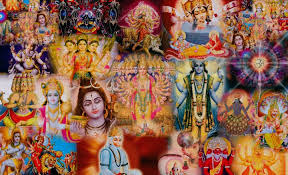
Each day of the week honours a different god from the Hindu pantheon. Many Hindus fast on a specific day of the week in addition to the special Vratas and Upvaas. Each day of the week has its own specialty, and there are countless folktales related to the weekly fasting. Im Avatar is the platform to visit if you are interested in this.
Sunday - Lord Surya is honoured on Sunday (Sun God). On the day of the fast (upvaas), only one meal is consumed. It's best to stay away from oil and salt. The colour red is the day's theme, and red flowers are offered to Surya Ravivar, or Lord Surya or Suryanarayana, on Sunday. The day's upvaas, or fasting, is dedicated to the Sun God.
Monday - Lord Shiva is honoured on Monday. Lord Shiva is considered to be readily delighted. As a result, many individuals celebrate Upvaas on Monday. Those who observe fasting only consume food once.
Tuesday - Lord Ganesha, Durga, Goddess Kali, and Lord Hanuman are honoured on Tuesday. The shrines of Devi and Hanuman are visited by the majority of worshipers. Those who fast should avoid eating salty foods at night.
Wednesday - Wednesday is Budvar, which honours Lord Krishna and the planet Budh, or Mercury. Lord Vithal, a Krishna manifestation, is also commemorated on this day. In Pujas, green leaves, particularly Tulsi leaves, are used.
Thursday - Lord Vishnu and his incarnations are honoured on Thursday. Milk, ghee, and other ingredients are used in pujas. Food is only consumed once, and only if it contains milk products.
Friday - Mahalakshmi, Santhoshi Ma, Annapuraneshwari, and Durga are the Mother Goddesses honoured on Friday. On the day, sweets are distributed. Those who follow the Vrat make it a point to eat only at night.
Saturday - Saturday is dedicated to removing Lord Shani's negative influence. People who believe in Hindu astrology are the ones who observe the Vrat on this day. The day's colour is black, and people flock to the Shani shrine.
To get deeper insight about religion and spirituality, Click here.
6 notes
·
View notes
Text

#youtube#iskcon#hare krishna#krishna#bhakti#srila prabhupada#vedic#bhagavad gita#Tulsi Devi#Tulasi Devi
2 notes
·
View notes
Text
Jesus and the Masters Invite Everyone Into the Temple - The Egalitarian Message of the Saints

Hear a truly delightful story about Jesus and his unwashed disciples crashing the temple as uninvited guests. It's found in an unknown gospel given by scholars the catchy name "Oxyrhynchus 840". Then more Brahman-Pharisee parallels: Sant Tulsi Sahib comes to the aid of a member of the Untouchable Caste known as the Sudras. Other compassionate, inclusive readings are from Baba Devi Sahab of Moradabad as well as Huzur Maharaj Rai Saligram of Agra. Ritual vs. real spiritual purity today during this Spiritual Awakening Radio Podcast. (Happy New Year)
Jesus and the Masters Invite Everyone Into the Temple - The Egalitarian Message of the Saints - Spiritual Awakening Radio Podcast - Listen or Download MP3 @
https://traffic.libsyn.com/spiritualawakeningradio/Unknown_Gospels.mp3
@ the Podcast Website With Buttons That Go To All the Popular Podcast APPS - Wherever You Follow Podcasts:
https://SpiritualAwakeningRadio.libsyn.com/jesus-and-the-masters-invite-everyone-into-the-temple
@ Apple Podcasts:
https://podcasts.apple.com/us/podcast/jesus-and-the-masters-invite-everyone-into-the-temple/id1477577384?i=1000639703826
@ Spotify Podcasts:
https://open.spotify.com/episode/6YFDGIjJAuaGWiI59pms5u
& @ Wherever You Subscribe and Follow Podcasts - At Your Favorite Podcast APP Just Do a Search for "Spiritual Awakening Radio" - (Apple Podcasts, Spotify, Google Podcasts, Amazon, Audible, PodBean, Podcast APP, Overcast, Jio Saavan, iHeart Radio, CastBox, etc...):
https://linktr.ee/SpiritualAwakeningRadio
In Divine Love (Bhakti), Light, and Sound, At the Feet of the Masters, Radhasoami,
James Bean
Spiritual Awakening Radio Podcasts
Sant Mat Satsang Podcasts
Sant Mat Radhasoami
A Satsang Without Walls
https://www.SpiritualAwakeningRadio.com
#satsang #spiritual #spiritualawakening #spiritualawakeningradio #podcast #spiritualpodcasts #spiritualitypodcasts #santmatsatsangpodcasts #santmat #sant_mat #radha_soami #radhasoami #radhasoamiji #radhaswami #inclusiveness #discrimination #egalitarian #egalitarianism #religion #compassion #freedom #liberation #spiritualfreedom #Sufis #suratshabdyoga #Jesus #Apocrypha #SayingsOfJesus #applepodcasts #spotifypodcasts
#christianity#sayings of jesus#christian mysticism#unknown gospels#meditation#spirituality#compassion#inclusive#egalitarian#spiritual awakening#spiritual awakening radio#podcasts#spirituality podcasts
14 notes
·
View notes
Text
KASHI
THE LAND OF DIVINITY
It should come as no surprise that Mark Twain once remarked that Varanasi, also known as Benaras, is twice as old as all of them combined and is older than history, tradition, and even legend. One of the oldest sacred writings in Hinduism, the Rig Veda, refers to Varanasi, the spiritual capital of India, as Kashi (Kāśi). The word Kaś, which meaning "to shine," is the root of the term Kashi. Thus, Kashi is sometimes referred to as the "city of light." Maybe the city served as a spiritual mentor and a lighthouse for wandering souls seeking knowledge. In various holy literature, Kashi was also referred to as Avimuktaka (never abandoned by Shiva), Rudravasa (the place where Shiva resides), Anandakanana, Mahasmasana, Surandhana, Brahma Vardha, Sudarsana, and Ramya.
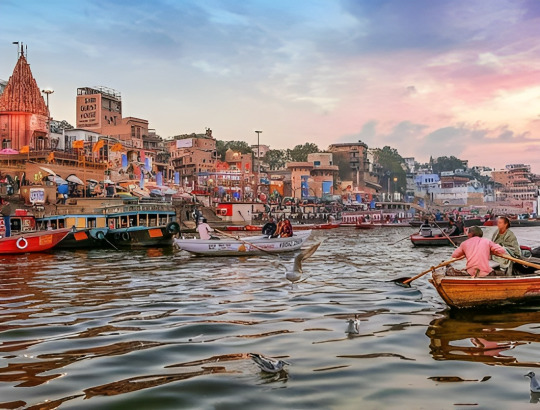
Dasaswamedh ghat
VARANASI
The two Ganga river tributaries that abut the city gave rise to the name Varanasi. The northern Varuna flows, whereas the southern Assi flows close to the Assi Ghat.
Varanasi has most likely been altered or converted into Benaras or Banaras . Some attribute it to the colonists, who altered the name to fit their regional dialect.
According to legend, Lord Shiva and Goddess Parvati founded Kashi, which is known as the "original ground."
And the city of light is surrounded by a plethora of other myths, stories, and legends. The holiest pilgrimage in Hinduism, Varanasi is revered by religious texts and is considered the microcosm of the religion. Perhaps for this reason, Hindus aspire to visit Kashi at least once in their lifetime. Regardless of your religious beliefs, Kashi has the power to transform your spiritual state.
The Buddhist Jataka stories and the Indian epics Ramayana and Mahabharata both frequently mention Varanasi. In the second millennium BCE, Varanasi served as the center of Aryan civilization and was a significant hub for trade and commerce. In the sixth century BCE, Varanasi served as the capital of the kingdom of Kashi. Just ten kilometers from Varanasi, in Sarnath, Lord Buddha delivered his first sermon. Xuanzang, a well-known Chinese traveler who visited Varanasi in 635 BCE, provided evidence of the city's splendor and prosperity.
Varanasi had a decrease in prosperity during the Mughal era, but the Marathas brought it back to life. It continued to be a hub for commerce and religion during British control. The several ghats offer views into the city's turbulent past.
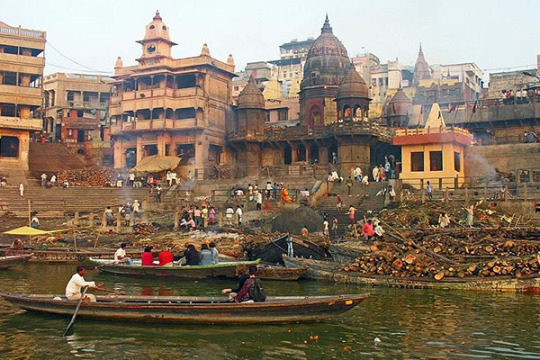
manikarnika ghat/ mahashamshan ghat
Here’s the itinerary
Duration: 5 Days
DAY 1: Arrival
Morning:
Arrive at Lal Bahadur Shastri International Airport or Varanasi Junction Railway station.
Hire a taxi or embrace the road by your own vehicle.
Afternoon
Check into your hotel or guesthouse.
Freshen up and rest after your journey.
Evening
Visit the Ghats of Varanasi.There are more than 70 ghats in Varanasi! The Ghats are the riverfront steps leading to the banks of the River Ganga.
Take a boat ride on the Ganges . Boat ride at the Ganges is a surreal experience, especially so if you do it late in the evening during the sunset.
Attend the Ganga Arti . Ganga Arti is one of the most spectacular things to watch at Varanasi.
Visit Kashi Chaat or Dina chaat to have lip smacking chaat, lassi , thandai and paan.

Arti at Ganga Ghat
DAY 2: Temple Tour
Morning:
Visit the temples near Dasaswamedh Ghat, including Kashi Vishwanath, Vishalakshi, Kashi Karvat, Annapurna, and Varahi Devi.
Noon:
Lunch at one of the many restaurants along Dasawamedh Ghat Road, we can continue exploring the remaining temples, which include Nepali Mandir, Lalita Gauri Mandir, Kaal Bhairav Mandir, and Mahamrityunjay Mandir.
Evening:
Tilbhandeshwar Mahadev mandir, Sankata Devi mandir, shri batuk bhairav temple, tridev mandir, birla mandir, tulsi manas mandir, durga mandir, sankat mochan

Sankat mochan


Day 3: Shopping Spree
Morning
Begin with Vishwanath Lane for accessories, dupataas, and delectable food.
Godowlia and Dal Mandi markets are next on our list for low-cost décor and dress materials.
For trendy footwear and high quality banarsi silk sarees at wholesale prices, visit Golghar and Rajan silk markets.
Noon
Gyanvapi is a must-see for anyone interested in authentic Indian décor. It will meet your high expectations for shawls, bangles, and other related items.
Lahurabir is a market where shopaholics can get their fix. Shops sell everything from home appliances to clothing, jewelry, and other accessories. It's the ultimate shopping experience.
If you want to buy handloom products, Chowk and Urban Hatt are the best places to go. This place is known as the mecca for the people who are passionate about handicrafts and handlooms.
Evening
The Banaras Art Gallery. One location solely dedicated to art lovers. You can find a wide variety of arts and paintings created by local artists here. You can also purchase statues in both ancient and modern styles. There is a wide range of home décor items available. Art can be purchased on a budget. The location is a haven for those who enjoy the arts. A market brimming with works completed by local artists.

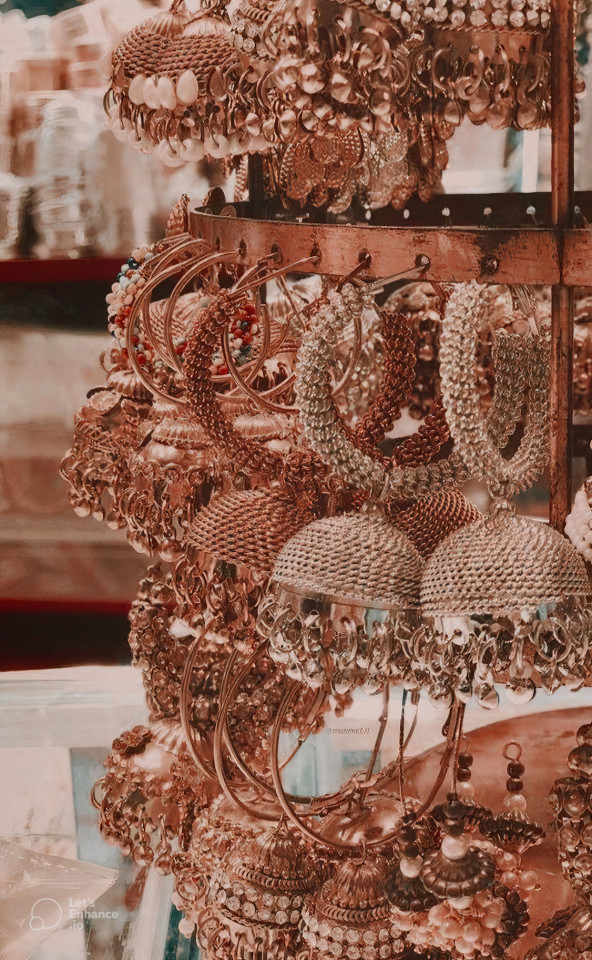




DAY 4: Blessing of Durga ma and Bodh Bhagwan
Morning
In and around the Vindhyachal Mata mandir in the morning. One of the holiest temples, this mandir is located in the Vindhyachal ranges. Ideally, hail a cab to go to the temple.
Noon
Enjoying a filling lunch close to Vindhaychal Mandir, we head to Sarnataka, the site of Lord Buddha's first sermon. See the Sarnath Archaeological Museum, the Dhamek Stupa, and other historical places.
Evening
Returning to Varanasi, taking a shower and rest.
Head to Baati Chokha for dinner and stuff your stomach with an abundance of delicious baati drenched in ghee. (Benefits: unlimited food) Get a good night’s rest.
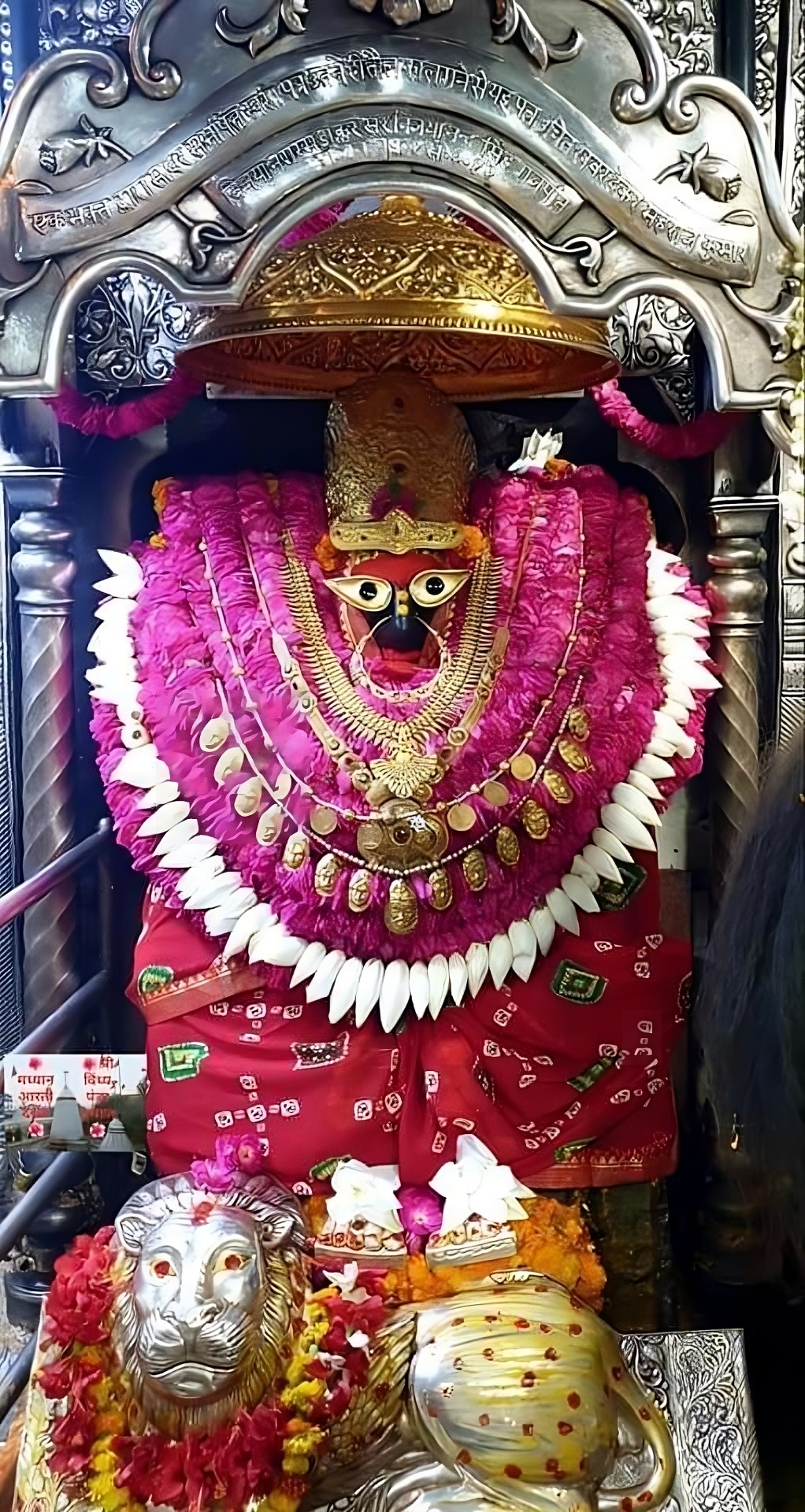
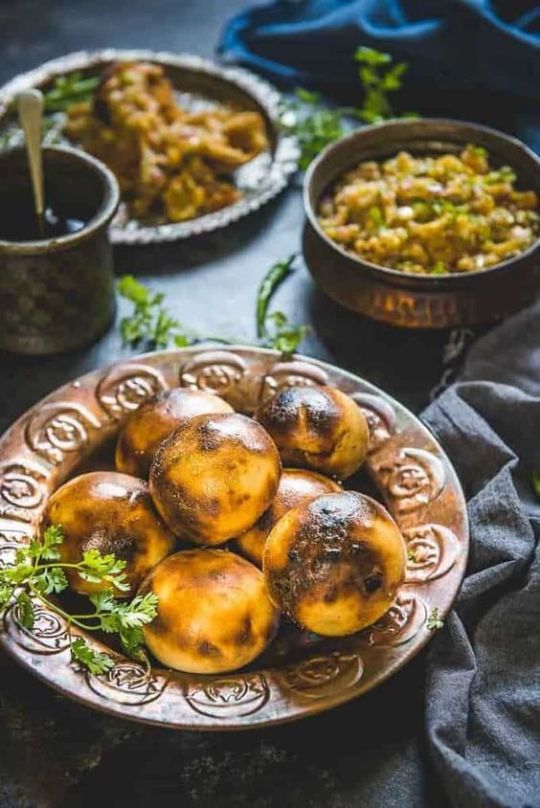
DAY 5: Home sweet home
Take a flight back home and bask in the memories you made on the journey.
#varanasi#kashi#tourism#benaras#dasaswamedhghat#gangaaarti#food#foodie#india love#beauty#aesthetic#culture#history#religion#shiva#lord shiva#gangaghats#vindhyachal#uptourism#peace#spirituality#sanatandharma
1 note
·
View note
Text
Unlocking Divine Union: The Significance and Spiritual Benefits of Ark Vivah Puja
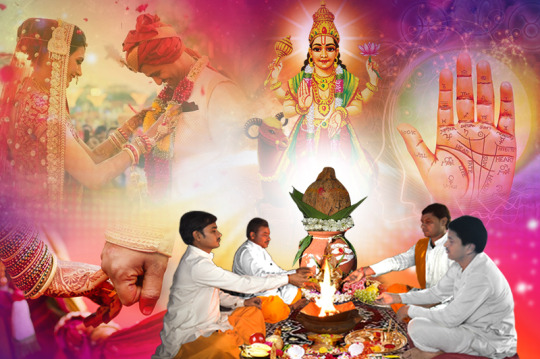
Introduction:
In the realm of Hindu spirituality, rituals and ceremonies hold a profound significance. These practices are not just traditions; they are bridges connecting mortal souls to the divine. One such sacred ritual is the Ark Vivah Puja, a ceremony that signifies a unique and spiritual union. In this blog, we delve into the depths of Ark Vivah Puja, exploring its significance, the power of mantras, and the spiritual benefits it bestows upon devotees.
Understanding Ark Vivah Puja:
Ark Vivah Puja, also known as "Tulsi Vivah," is a ceremonial marriage between the holy basil plant (Tulsi) and the deity Lord Vishnu or his incarnation Lord Krishna. This ritual is usually performed on the Ekadashi tithi (11th day) of the waxing moon in the month of Kartik (October–November). The ceremony marks the symbolic wedding of the divine and the sacred Tulsi plant, which holds immense spiritual importance in Hindu culture.
The Mantra and its Power:
Mantras are powerful vibrations that connect practitioners to higher realms of consciousness. During the Ark Vivah Puja, specific mantras are chanted to invoke the blessings of Lord Vishnu and Tulsi Devi. One of the most revered mantras is the "Shri Krishna Tulsi Mantra," which is recited to seek divine harmony and blessings in the union. Chanting this mantra not only purifies the surroundings but also uplifts the spirits of those participating.
Significance of Ark Vivah Puja:
The Ark Vivah Puja holds multifaceted significance:
Spiritual Union: The marriage of Tulsi and Lord Vishnu symbolizes the harmonious union of the divine feminine and masculine energies. This represents the cosmic balance and the interconnectedness of all creation.
Blessings of Lord Vishnu: Lord Vishnu is considered the preserver of the universe. By participating in the Ark Vivah Puja, devotees seek his divine blessings for a prosperous and protected life.
Purification: The Tulsi plant is renowned for its purifying properties. Its presence in homes is believed to cleanse the surroundings and ward off negative energies. Through this ritual, devotees aim to purify their inner and outer environments.
Health and Longevity: The leaves of the Tulsi plant hold medicinal value. Performing the puja is believed to promote good health and longevity.
Kartik Ekadashi: The day of the Ark Vivah Puja falls on Kartik Ekadashi, a highly auspicious day for spiritual practices. Participating in this puja on this day amplifies its significance and benefits.
Spiritual Benefits of Ark Vivah Puja:
Engaging in the Ark Vivah Puja offers profound spiritual benefits:
Inner Harmony: The puja promotes inner harmony and balance by invoking the energies of divine union.
Purification of Mind: Chanting mantras and performing rituals cleanses the mind of impurities, fostering clarity and spiritual growth.
Divine Protection: Seeking blessings from Lord Vishnu through this puja establishes a protective shield around devotees, guarding them from adversities.
Cultural Reverence: Participating in such rituals helps preserve and honor the rich cultural and spiritual heritage of Hinduism.
Connection with Nature: The Tulsi plant symbolizes nature's sacredness. Engaging with it in this ritual fosters a deeper connection with the natural world.
Ark Vivah Puja by Astro Pragyan:
At Astro Pragyan, we understand the profound impact of Vedic rituals on spiritual well-being. Our experienced priests perform the Ark Vivah Puja with meticulous adherence to traditions and rituals. Through this sacred ceremony, we aim to guide devotees toward spiritual elevation and a deeper connection with the divine.
Book this Ark Vivah Puja:
Ready to embark on a journey of spiritual union and growth? Book your Ark Vivah Puja with Astro Pragyan today. Allow us to guide you through this sacred ceremony and help you reap its spiritual benefits.
Conclusion:The Ark Vivah Puja stands as a testament to the divine mysteries woven into Hindu traditions. With its rich symbolism, mantras, and spiritual benefits, it offers a profound opportunity for devotees to connect with the divine and transform their lives. As you embark on this journey of spiritual union, let the Ark Vivah Puja illuminate your path with blessings, harmony, and enlightenment.
#Hindu culture#Ark Vivah Puja#Vedic rituals#spiritual heritage of Hinduism#Kartik Ekadashi#astronomy#astrology#spirituality#motivation
0 notes
Text

या दृष्टा निखिलाघसंघशमनी स्पृष्टा वपुष्पावनी।
रोगाणामभिवन्दिता निरसनी सिक्तान्तकत्रासिनी।।
प्रत्यासत्तिविधायिनी भगवतः कृष्णस्य संरोपिता।
न्यस्ता तच्चरणे विमुक्तिफलदा तस्यै तुलस्यै नमः।।
जो दर्शन करने से सारे पाप का नाश कर देती है, स्पर्श करने पर शरीर को पवित्र कर देती है, प्रणाम करने पर रोगों का नाश करती है, जल से सींचने पर यमराज को भी भय पहुँचा देती है, आरोपित करने पर भगवान श्रीकृष्ण के समीप ले जाती है और भगवान के चरणों में चढ़ाने पर, मोक्ष रूपी फल देती है, उस तुलसी देवी को नमस्कार है।
One who destroys all sins by seeing, purifies the body when touched, destroys diseases when worshiped, gives fear to Yamraj even when irrigated with water, when placed near Lord Krishna And on offering at the feet of the Lord, gives the fruit of salvation, salutations to that Tulsi Devi.
Padam Puran
0 notes
Text
SWABHAB KABI GANGADHAR MEHER
SWABHABA KABI GANGADHAR MEHER
Born: 9 August 1862
Place : Barpali
Died: 4 April 1924 (aged 61)
Pen name: Swabhaba Kabi
Occupation: Judicial Moharir (Accountant)
Language: Odia
Education: Std V
Genres: Poet
Subjects: Devotion
Notable work(s) Tapaswini, Rasa-Ratnakara, Balaram-dev, Pranaya Ballari, Kichaka Badha,
Indumati (First Published work), Ayodhya Drusya, Padmini (Last work)
Spouse(s): Shanta Devi, Champa Devi (After the death of Shanta Devi)
Children: Arjun Meher (died at the age of 12), Bhagaban Meher (Famous as Kabi-Putra),
Basumati Meher, Laxmi Meher
Gangadhar Meher , renowned Odia poet of 19th century also known as Swabhaba Kabi,was a literary
Midas, who transformed everything into gold by the alchemic touch of his genius. He was a born
poet of delicate charm. His was a clean white style. His poem Bhakti (The Devotion) bears eloquent
testimony to the change in religious outlook. He was essentially a poet of intuition and side by
side he had a penetrating insight. Though poor in wealth and education, he was very rich in mind
and culture. In almost all his writings there is a glimpse of originality.
Childhood--
Gangadhar was born in 1862 on the full moon day of Shravan at Barpali of present day Bargarh district
of Odisha. Chaitanya Meher was working as a village Vaidya (Ayurvedic doctor) besides his family profession
of weaving. But as he could not maintain his family with the income of these works, he opened a village
school and began to teach a few children. Gangadhar Meher could read up to the Middle Vernacular Standard
hurdling over diverse disadvantages, and his excessive desire for reading one day dragged him to the field
of writing poems.
As a young boy, he heard the Odia Ramayan composed by Balaram Das and afterwards he himself read it as well
as the Odia Mahabharata by Sarala Das. He also read and mastered a great number of Sanskrit books; of which
‘Raghubansam’, deserve mention. He had proficiency in Hindi and Bengali. Tulsi Ramayan in Hindi used to be
held by him in great respect. He used to read Bengali magazines and newspapers. Gangadhar, in his student
life, read Sanskrit.
Gangadhar got himself married at the age of 10. As his father’s pecuniary condition was not satisfactory,
Gangadhar used to go to school in the morning and help his father in weaving in the afternoon. The poet’s
weaving was as attractive and beautiful as his poetry. For his clear and beautiful hand writing people used
to visit him for writing their documents. The pecuniary condition of the family improved a bit due to his
hard labour when to the misfortune of the family, the ancestral house caught fire.
Career
The then Zamindar of Barpali, Lal Nruparaj Singh offered him the post of an Amin (Patwari). Coming to learn
of amicable behaviours and good virtues of Gangadhar, the Zamindar promoted him to the post of a Moharir. He
continued to serve in the said post and was transferred to Sambalpur, Bijepur and Padmapur and at last transferred
to him own native place Barpali on a salary of Rs. 30/- P.M.
The post was very liberal and magnanimous in his social life. During the last age of his life, the poet organized
an All Odisha Social Conference of Mehers with a view to uplifting the entire weaver society. Nearly three thousand
Mehers from different parts of Odisha assembled in the Conference. The poet put up twelve proposals for the reform
of the society and all were passed unanimously.
Literary career
Gangadhar started composing poems from a very tender age. His first writings follow the style and technique of the
ancient Odia writers. His first Kavya (poetic work) was “Rasa-Ratnakara”. Then being persuaded by some friends he
changed his ways and wrote poems and kavyas in the modern Odia style. Kabibar Radhanath Ray praised his writing very
much. Then Gangadhar Meher produced innumerable writings that have no parallel in point of sweet imaginativeness, in
beauty and clarity of language, in the novelty of style, in point of forceful character painting and in the lively
description of nature from different angles of vision. His writings are like precious jewels in the store room of
Utkal Bharati (Odia language).
GANAGADHAR BOOK AVAILABLE HERE
1 note
·
View note